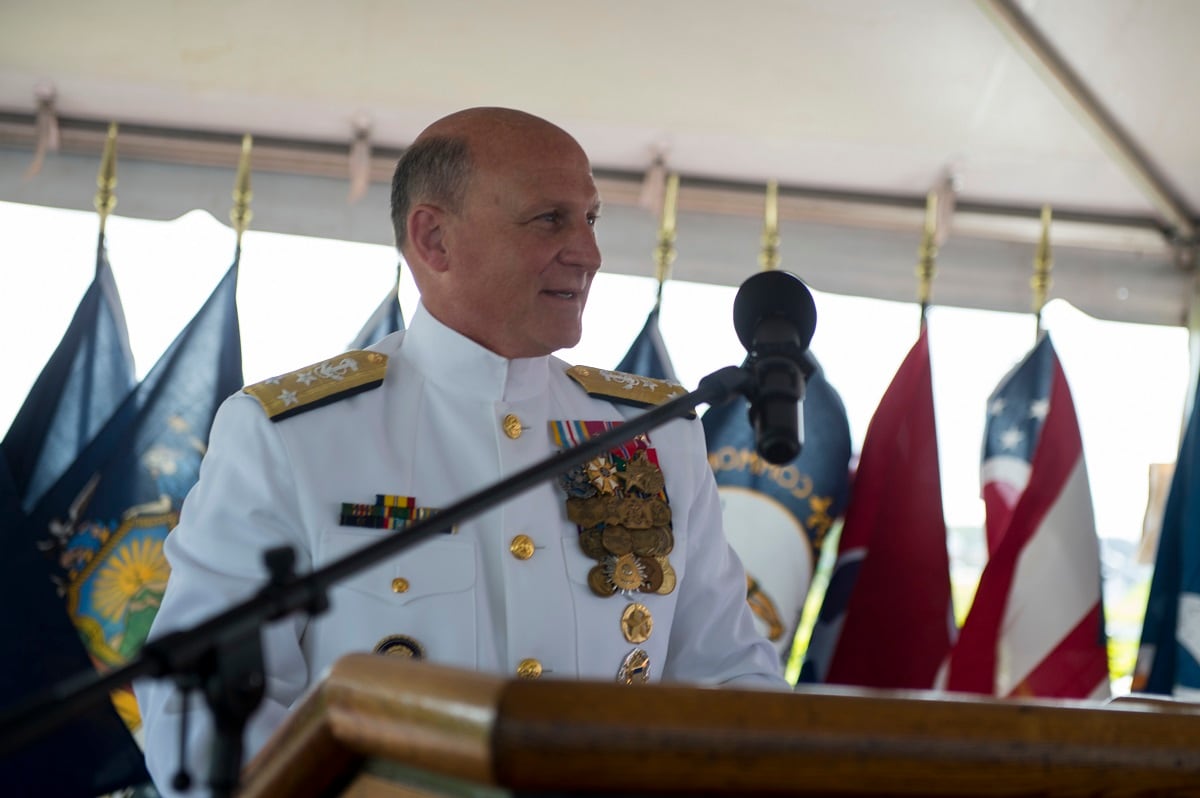WASHINGTON – Navy Secretary Richard Spencer will nominate the three-star former head of Navy’s Cyber Command to become the 32nd chief of naval operations, a deep selection for the sea service’s top officer unseen since 1970.
Three sources told Defense News that Vice Adm. Michael Gilday, the Director of the Joint Staff since March 1, will be promoted over his four-star colleagues, who will stay at their current commands.
He’ll succeed Adm. John Richardson, whose tenure was marked by a steadfast push to modernize and toughen the Navy in an era of great power competition as well as twin guided-missile destroyer collisions that killed 17 sailors in 2017 and the ongoing “Fat Leonard” public corruption scandal that gutted a generation of high-ranking officers serving in the Japan-based 7th Fleet.
Gilday, 56, and other Navy leaders met with President Donald J. Trump late Wednesday and received his blessing, according to the Wall Street Journal.
Defense News reported Tuesday that Gilday was under consideration for the job.
RELATED

His rapid promotion comes after the downfall of Adm. Bill Moran, the former Vice Chief of Naval Operations who announced Sunday that he would file his retirement papers.
Picked by Trump and confirmed by the Senate, Moran was poised to take the helm of the sea service after an Aug. 1 ceremony at the U.S. Naval Academy in Annapolis, Maryland.
Instead, he offered to depart the Navy after 39 years of service due to an “an open investigation” into emails he exchanged with a retired former staffer “who had while in uniform been investigated and held accountable over allegations of inappropriate behavior," according to a prepared statement provided to Navy Times.
Multiple senior Pentagon officials confirmed that the former officer is Chris Servello, who investigators previously found had behaved inappropriately with female colleagues in 2016 while dressed as Santa Claus at a boozy Pentagon holiday party.
The imbroglio filled with tawdry shenanigans later was tagged by senators as the “Bad Santa” scandal.
Although the law allows for presidents to dip into the ranks of vice admirals to fish out a CNO, it hasn’t been done since President Richard Nixon recalled Vice Adm. Elmo “Bud” Zumwalt Jr. from Vietnam to serve as his top naval officer.
Dwight D. Eisenhower also promoted Rear Adm. Arleigh Burke over 92 flag officers to become his CNO in 1955.
But for the most part, presidents have stuck with four-stars as their choices. If confirmed by the Senate, Gilday will pin on his fourth, too.
Gilday is the son of a sailor.
Raised in Lowell, Massachusetts, he graduated from the U.S. Naval Academy in 1985 and became a surface warfare officer, according to his official biography.
He served on board the guided-missile destroyer Chandler and cruisers Gettysburg and Princeton before commanding destroyers Higgins and Benfold and Destroyer Squadron 7.
The sea combat commander for the Ronald Reagan Carrier Strike Group, he later commanded the Dwight D. Eisenhower Carrier Strike Group as a flag officer.
Ashore, he also directed operations for NATO’s Joint Force Command Lisbon, U.S. Cyber Command and the Joint Staff and served as chief of staff for Naval Striking and Support Forces NATO.
His decorations include the Distinguished Service Medal, four Defense Superior Service Medals, three Legion of Merit Medals and the Navy and Marine Corps Commendation Medal with a Combat “V” device for battlefield valor.
David B. Larter was the naval warfare reporter for Defense News.
Prine came to Navy Times after stints at the San Diego Union-Tribune and Pittsburgh Tribune-Review. He served in the Marine Corps and the Pennsylvania Army National Guard. His awards include the Joseph Galloway Award for Distinguished Reporting on the military, a first prize from Investigative Reporters & Editors and the Combat Infantryman Badge.








